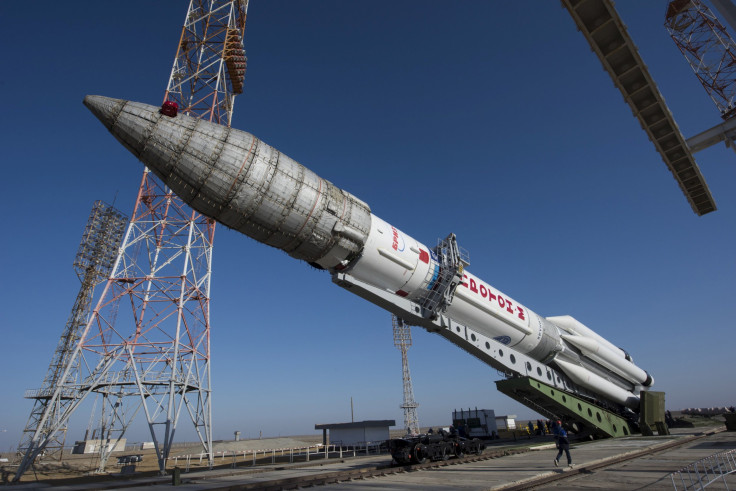Europe And Russia’s ExoMars Mission, Which Will Search For Signs Of Life On Mars, To Lift Off Monday

On Monday, a Proton rocket carrying the ExoMars Trace Gas Orbiter (TGO) and the Schiaparelli landing module will take off from the Baikonur Cosmodrome in Kazakhstan. The mission, product of a collaboration between the European Space Agency (ESA) and Russia’s Roscosmos, aims to analyze the red planet’s atmosphere for signs of possible microbial life.
“The ExoMars Orbiter will be inserted into an elliptical orbit around Mars and then sweep through the atmosphere to finally settle into a circular, approximately 400-km altitude orbit ready to conduct its scientific mission,” the ESA said in a statement. “The main objectives of this mission are to search for evidence of methane and other trace atmospheric gases that could be signatures of active biological or geological processes and to test key technologies in preparation for ESA's contribution to subsequent missions to Mars.”
Join us for #ExoMars launch Monday - streaming starts at 08:30 GMT https://t.co/uW6DJ4kyys #askESA https://t.co/mq44BHYgps
— ESA (@esa) March 12, 2016
The orbiter and the lander will reach Mars in October after completing a journey of over 300 million miles. Three days before reaching the atmosphere of Mars, Schiaparelli will be ejected from the orbiter, and is expected to land on the red planet on Oct. 19, the ESA said.
Although the lander would be carrying a few science instruments “for several days of activities,” ESA engineers are primarily interested in seeing how the module performs during entry, descent and touchdown, so that they can fine-tune their controlled landing apparatus for future missions.
Once it has dropped off Schiaparelli, the TGO will spend the better part of the year maneuvering itself into orbit, nearly 250 miles above the surface. ESA aims to use the orbiter as a data relay for the second ExoMars mission, planned for launch in 2018. It will also provide data relay for NASA rovers.
However, its main goal is to analyze methane — a gas that on Earth is emitted by living microbes, and traces of which have been observed by previous Mars missions. Since a simple organic molecule like methane should be easily destroyed in the harsh, radiation-rich Martian environment, its existence indicates a replenishing source, one that may be either biological or geological.
“Whatever the explanation, it all points to the existence of liquid water in the sub-surface, and that changes slightly our vision of Mars, because it means it is a planet that is a little more active than we've recognized,” Jorge Vago, ExoMars project scientist, told the BBC.
The mission comes just months after NASA announced that it had found the “strongest evidence yet” that flowing water may still be present on the red planet. The discovery also reignited debate over the existence of microbial life on Mars.
© Copyright IBTimes 2024. All rights reserved.






















